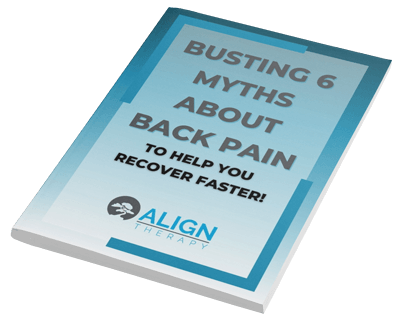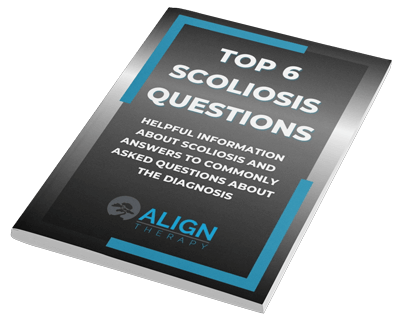Living with adult scoliosis can present daily challenges, from persistent pain to reduced mobility, impacting your quality of life. However, physical therapy offers a beacon of hope, providing tailored strategies to manage and alleviate these symptoms effectively. By focusing on strengthening the core, improving posture, and enhancing flexibility, physical therapy can significantly reduce discomfort and improve overall function. In this post, we delve into how integrating physical therapy into your routine can transform your approach to managing adult scoliosis, empowering you to lead a more active and fulfilling life. Discover the transformative benefits that await you on this journey to better health and well-being. Book a free consultation to start your path to recovery today.
Understanding Adult Scoliosis
Adult scoliosis is a complex condition that affects many individuals, often silently impacting their daily lives. Let’s explore what it entails, its common symptoms, and how it influences everyday activities.
What is Adult Scoliosis?
Adult scoliosis is a sideways curvature of the spine that occurs in skeletally mature individuals. It can develop due to various factors, including degenerative changes, untreated childhood scoliosis, or idiopathic causes.
Unlike adolescent scoliosis, adult scoliosis often progresses more rapidly and can lead to more severe symptoms. The condition is typically diagnosed when the spinal curve measures 10 degrees or more on an X-ray.
Adult scoliosis can affect different regions of the spine, with lumbar (lower back) scoliosis being the most common form in adults. Understanding the specifics of this condition is crucial for effective management and treatment.
Common Symptoms and Challenges
Living with adult scoliosis often brings a range of symptoms and challenges that can significantly impact quality of life. Common symptoms include:
- Chronic back pain
- Uneven shoulders or hips
- Visible curve in the spine
- Difficulty standing or sitting for extended periods
These symptoms can lead to reduced mobility, affecting work performance and social interactions. Many individuals with adult scoliosis also experience fatigue due to the constant strain on their muscles.
Additionally, breathing difficulties may occur in severe cases, as the curved spine can compress the chest cavity. Understanding these symptoms is the first step towards seeking appropriate treatment and relief.
Impact on Daily Life
Adult scoliosis can profoundly affect various aspects of daily life, often in ways that may not be immediately apparent to others. The condition can influence:
- Physical activities: Simple tasks like bending, lifting, or even walking can become challenging.
- Sleep quality: Finding a comfortable sleeping position may be difficult, leading to poor rest.
- Self-esteem: Visible changes in posture or body shape can impact confidence and body image.
Moreover, the chronic pain associated with adult scoliosis can lead to mood changes, affecting relationships and overall well-being. Many individuals find themselves limiting their activities to avoid discomfort, which can lead to a cycle of decreased physical fitness and increased pain.
Despite these challenges, it’s important to remember that effective management strategies exist. Reach out to a specialist to discuss your specific situation and explore tailored solutions.
Physical Therapy for Scoliosis Relief
Physical therapy offers a promising avenue for managing adult scoliosis, providing targeted exercises and techniques to alleviate pain and improve function. Let’s explore the benefits, personalized approaches, and success stories associated with this treatment method.
Key Benefits Explained
Physical therapy for adult scoliosis offers numerous benefits that can significantly improve quality of life. These benefits include:
- Pain reduction through targeted exercises and manual therapy
- Improved posture and spinal alignment
- Enhanced flexibility and range of motion
- Strengthened core and back muscles
One of the most significant advantages of physical therapy is its non-invasive nature. Unlike surgery, it doesn’t carry the risks associated with invasive procedures and often provides long-lasting relief when practiced consistently.
Physical therapy also empowers patients with knowledge and tools to manage their condition independently. This self-management aspect can lead to a sense of control and improved overall well-being.
Personalized Treatment Plans
Every case of adult scoliosis is unique, which is why personalized treatment plans are crucial for effective management. A skilled physical therapist will assess your specific condition and develop a tailored approach that addresses your individual needs and goals.
These personalized plans typically include a combination of:
- Specific exercises to strengthen weak muscles and stretch tight ones
- Manual therapy techniques to improve spinal mobility
- Postural education to help maintain proper alignment throughout the day
- Functional training to improve performance in daily activities
The therapist will also consider factors such as your age, overall health, and lifestyle when crafting your treatment plan. This holistic approach ensures that the therapy integrates seamlessly into your daily life, maximizing its effectiveness.
If you’re curious in how physical therapy could help your journey, book a free discovery visit today. During this 1-on-1 session, you’ll receive expert insights, tailored exercises, and a clear plan to move forward.
Click here or call (801) 980-0860 to schedule your free visit!
More Free Resources:
Read our blog – Non-Surgical Scoliosis Strategies: 5 Natural Ways to Support Your Spine – Align Therapy Clinic, Utah
See what others are saying – Google Reviews
Download a free report – Adult Scoliosis Lehi, UT, Adult Scoliosis St George, UT – Align Therapy Clinic, Utah



